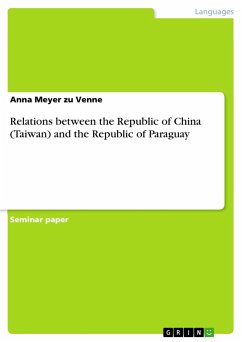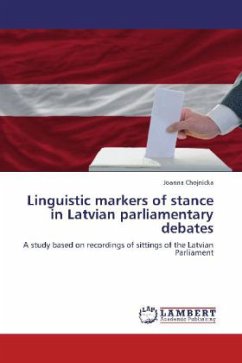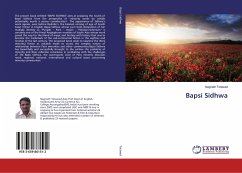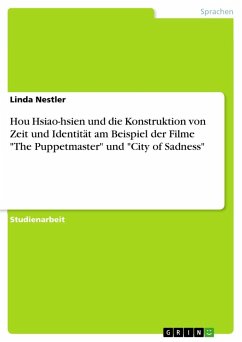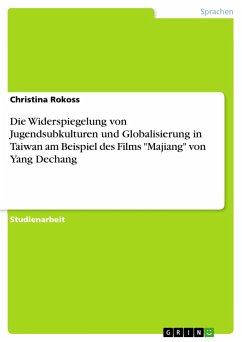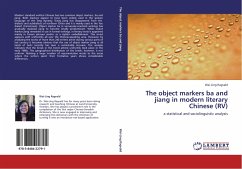
The object markers ba and jiang in modern literary Chinese (RV)
a statistical and sociolinguistic analysis
Versandkostenfrei!
Versandfertig in 6-10 Tagen
52,99 €
inkl. MwSt.

PAYBACK Punkte
26 °P sammeln!
Modern standard written Chinese has two common object markers, ba and jiang. Both markers appear to have been widely used in the spoken language of the Tang dynasty. Today jiang has disappeared from the dialects and subdialects of northern China and it is mainly used in the Yue dialect (Cantonese). Object marker ba in vernacular-oriented writings has gradually replaced jiang to become totally predominant. While object marker jiang remained in use in formal writings, in literary texts it appeared mainly in frozen phrases and/or as a stylistic embellishment. This trend appears with uniformity al...
Modern standard written Chinese has two common object markers, ba and jiang. Both markers appear to have been widely used in the spoken language of the Tang dynasty. Today jiang has disappeared from the dialects and subdialects of northern China and it is mainly used in the Yue dialect (Cantonese). Object marker ba in vernacular-oriented writings has gradually replaced jiang to become totally predominant. While object marker jiang remained in use in formal writings, in literary texts it appeared mainly in frozen phrases and/or as a stylistic embellishment. This trend appears with uniformity all over the Chinese-speaking area. However, by analyzing the works of more than 240 writers active during various parts of last century it becomes obvious that the use of object marker jiang in all kinds of texts recently has seen a remarkable increase. The analysis indicates that the break in the trend almost uniformly took place in the early 1980s. The geographical distribution of the break, however, is not uniform. Relating a large number of representative works to the areas where the writers spent their formative years shows considerable differences.



